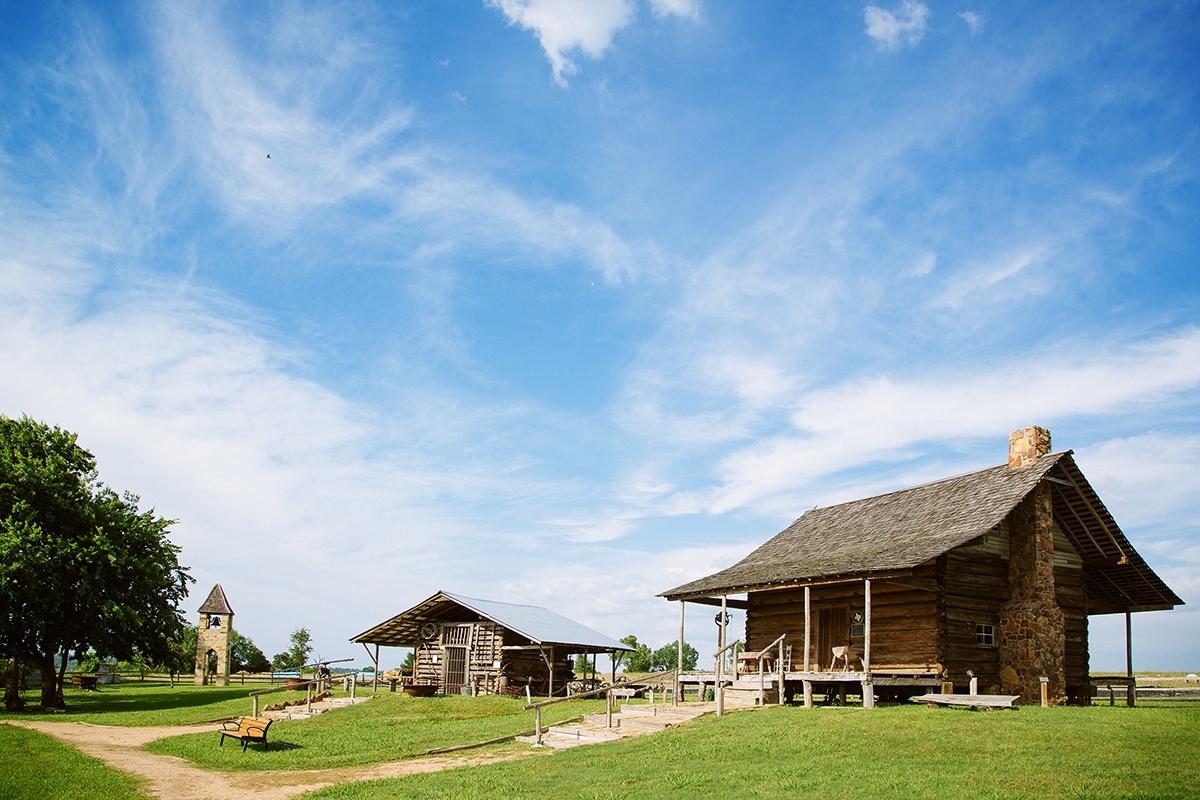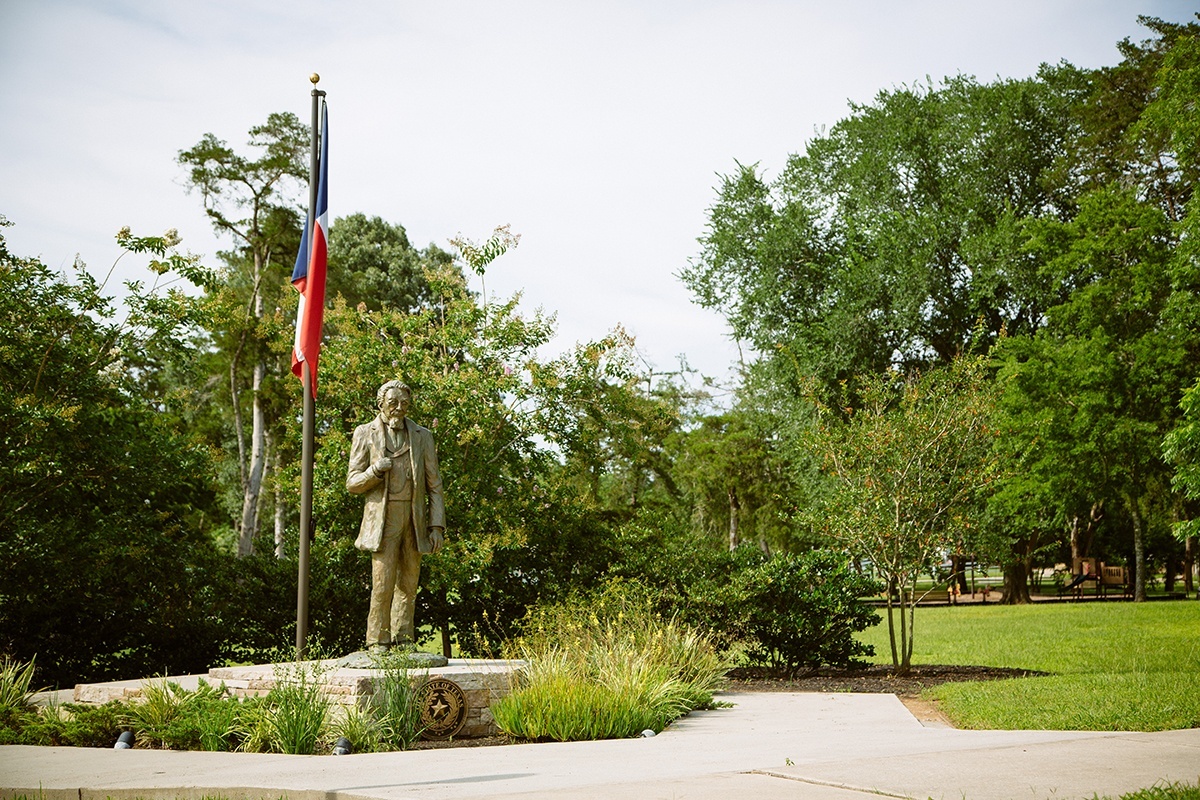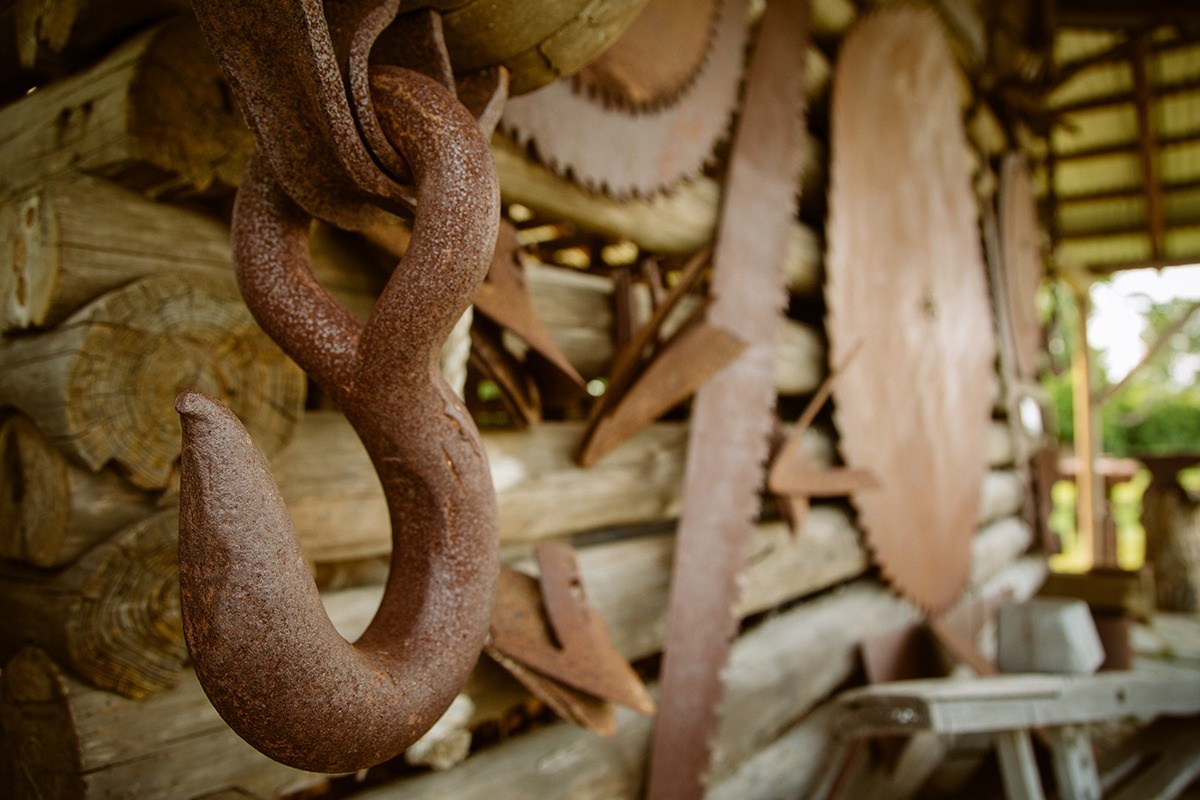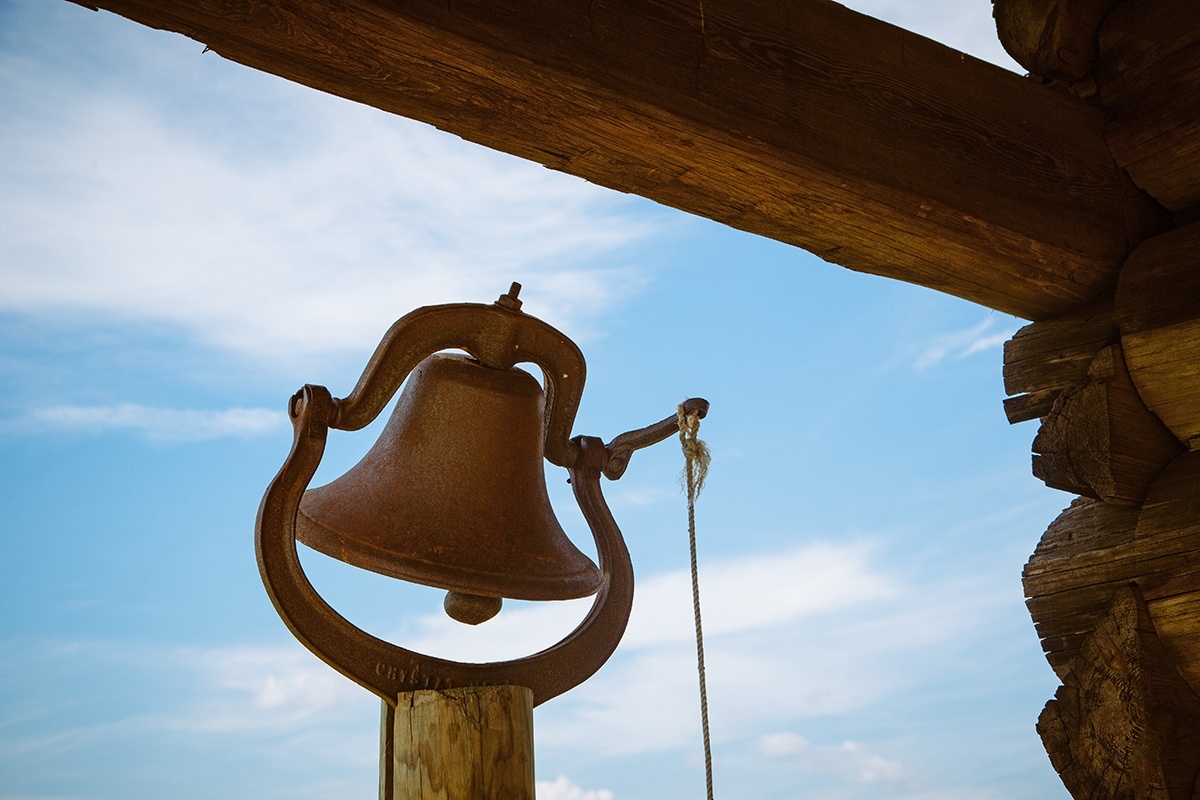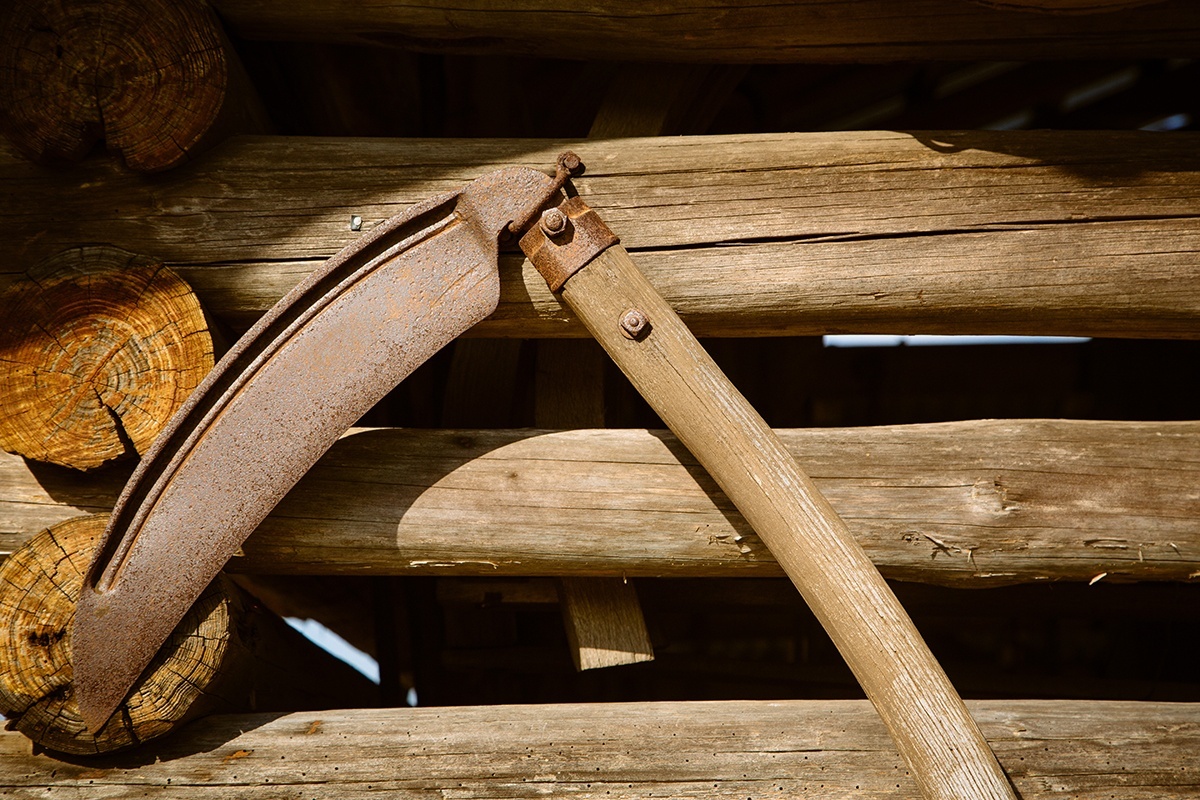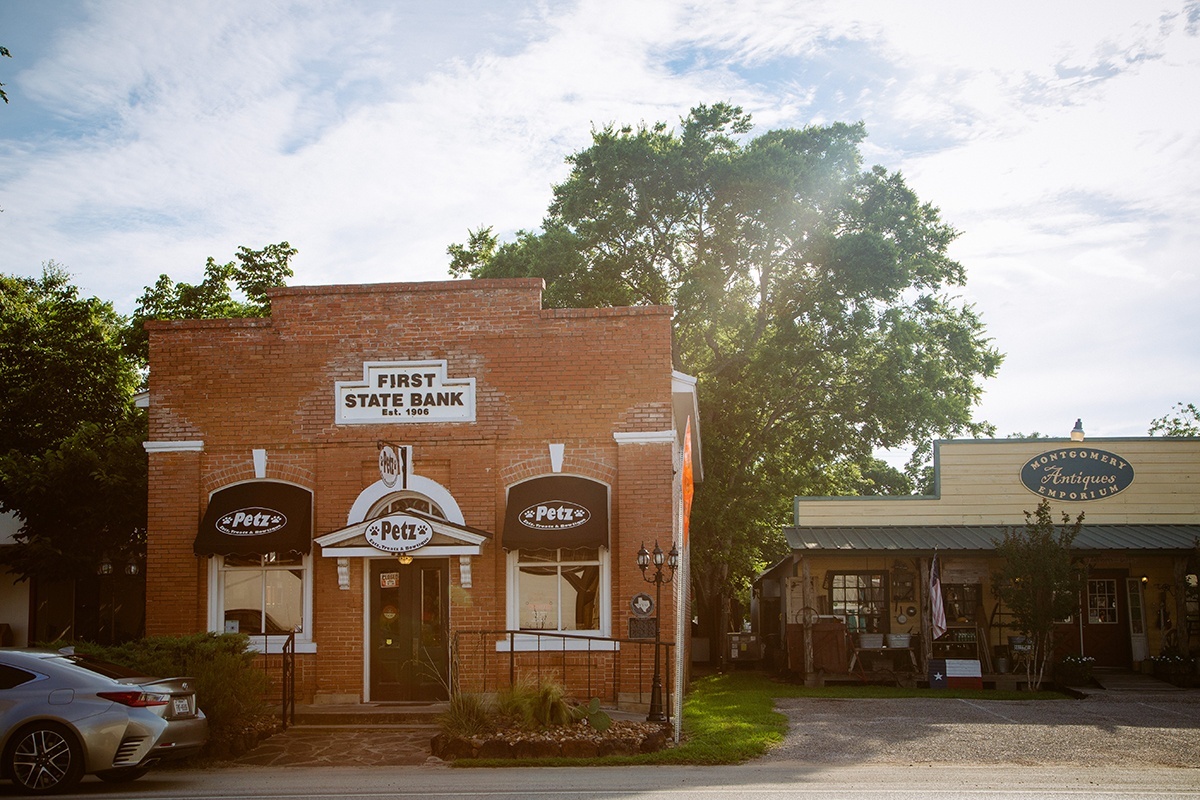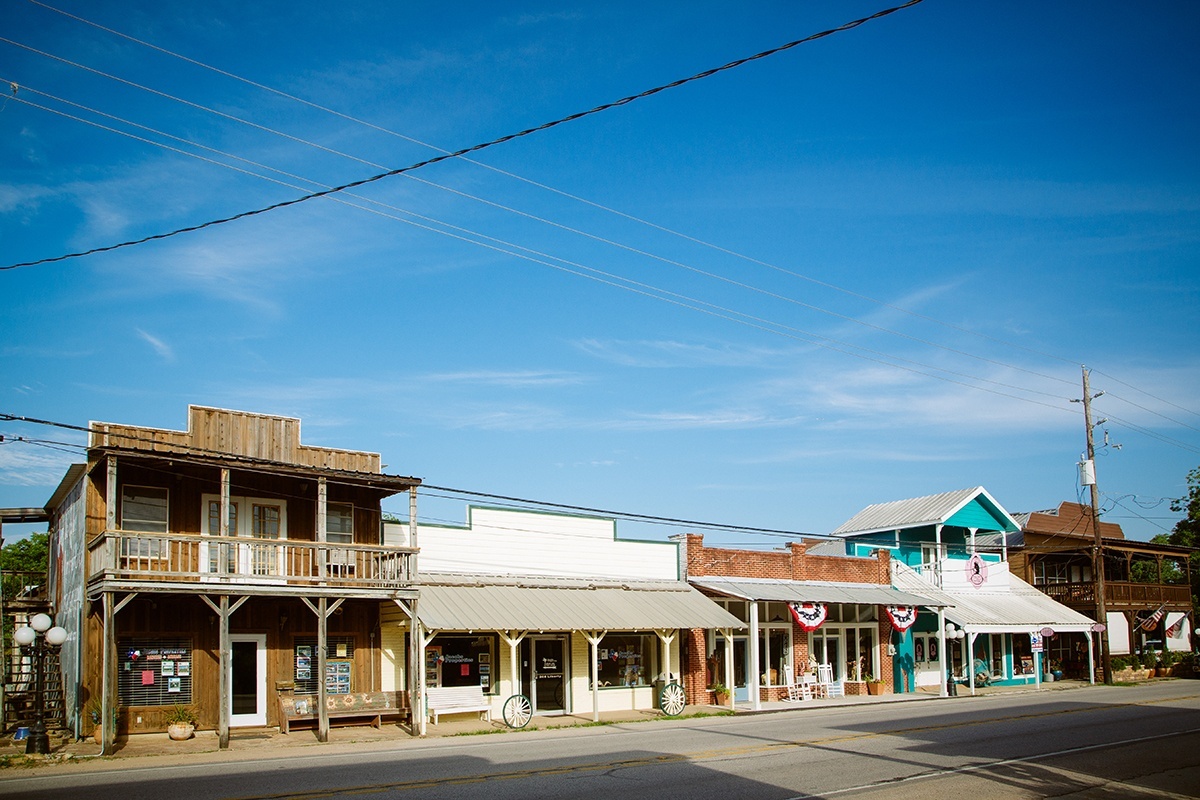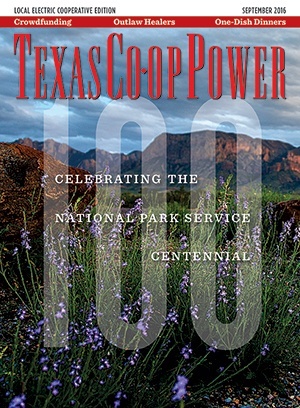On a typical small-town Saturday, Montgomery is teeming with visitors who connect with the personality of one of the oldest towns in Texas. Fifty-six miles northwest of downtown Houston, Montgomery is a short drive for city dwellers looking for a country weekend. Other visitors have discovered the town on a side trip from nearby Lake Conroe.
Evidence suggests that the first residents were part of the 1820s Lake Creek Settlement. In 1837, the town became the first seat of Montgomery County, the third county formed in the Republic of Texas.
Start exploring at the Nathaniel Hart Davis Museum, says Bea Rouse, docent and member of the Montgomery Historical Society. “This museum is a great example of the homes that were here in the pioneer days,” she says. Part of the museum is inside the Davis family’s log cabin, which Davis—first mayor of Montgomery—acquired in payment for legal services. A short walk away, you will find more than a dozen historical markers designating well-preserved homes and commemorating two churches. The Methodist congregation was founded in the late 1830s, and the parsonage, built in 1842, was the first Methodist parsonage in Texas, says Billy Ray Duncan, president of the Montgomery Historical Society.
Fernland Historical Park downtown, a venture of a nonprofit, the city and Sam Houston State University, is home to the Arnold-Simonton House, a Republic of Texas-era home listed in the National Register of Historic Places. The park also features the 1867 Crane cabin, along with a blacksmith’s shop, a Civil War-era house and the Jardine cabin, one of the five oldest log structures in Texas. It was built around 1830 with hand-hewn logs, a mud-and-stick chimney and leather-hinged rifle slots by the front door.
“I’ve seen a lot of log cabins around the country,” Duncan says, “but I’ve never seen another one with rifle slots.”
To find sites of historical interest, you might ask a Montgomery Junior High School student. In 1999, Brenda Beaven, a now-retired history teacher, member of the Montgomery Historical Society and co-founder of Lone Star Honor Flight (which honors World War II veterans), began requiring seventh-graders to participate in a scavenger hunt to familiarize them with local history. Since then, thousands of students trekked through the streets of Montgomery looking for historical sites. One topic that often impresses them, Beaven says, is that Sam Houston had such close ties to the town.
“He stayed in many of the houses,” she says, “and he used to come here to go bear hunting.” Sam Houston’s Bear Bend cabin was moved when it was threatened by the construction of Lake Conroe in the early 1970s, and was moved again, to the grounds of the Sam Houston Memorial Museum.
Any Montgomery resident, regardless of age, is likely to report that the town is the birthplace of the Texas flag and was so recognized in 1997 by the 75th Texas Leg-islature. Physician Charles B. Stewart, signer of the Texas Declaration of Independence and first Texas secretary of state, designed the iconic Lone Star flag. You can find his grave at the “new” cemetery in Montgomery, which was established in 1868.
(The “old” cemetery dates back to 1838.)
The first Saturday of each month, locals sell homemade, handmade and homegrown goods at Lone Star First Saturday. The second Saturday of every December, Christmas in Montgomery includes a parade, cookie walk and candlelight tour of historic homes; the Texian Heritage Festival is held every October. Each April, there’s an antique festival, and each September, a wine and music festival.
Or just visit next Saturday.
——————–
Writer Ruth Fields lives in Montgomery and is a member of Mid-South Synergy and Hamilton County Electric Cooperative.
